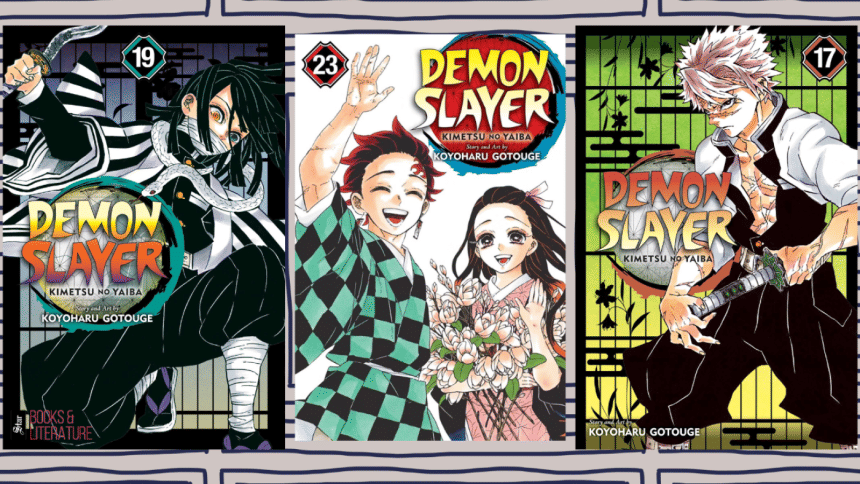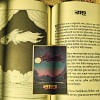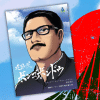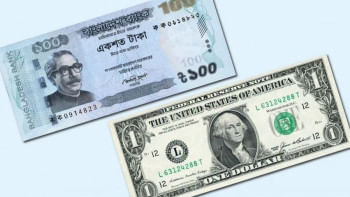The tragedy of ‘Demon Slayer’

This article contains spoilers from the Demon Slayer manga, so read at your own risk!
For many years, I didn't understand the craze behind Demon Slayer (Shueisha, 2016). Despite being a manga and anime fan, I kept this one on the backburner because of my reluctance to read mainstream manga until their hype died down. Finally, after dilly-dallying, I picked it up.
Little did I know, I was about to delve into a tragic story that paralleled a very dark reality.
On the surface, Demon Slayer is a typical shōnen manga set in the Taishō era of Japan. The protagonist, Tanjiro Kamado, lost his family to a brutal demon attack carried out by the King of the Demons, Muzan Kibutsuji. Only Tanjiro's sister, Nezuko, survived the slaughter but was turned into a demon by Muzan. Desperate to keep her alive, Tanjiro sets off to join the Demon Slayer Corps, a band of specially trained soldiers who aim to eliminate Muzan and his demon army while searching for a cure to turn Nezuko back into a human. Along the way, he's joined by comrades like Zenitsu, Inosuke, and Genya, who, like Tanjiro, each have personal vendettas against the demons. The more Tanjiro continues on this path, the more horrors and atrocities he faces, including the loss of his mentor. He also comes to the realisation that demons were once human beings themselves.
But here is the real tragedy: Tanjiro and his friends are all child soldiers. Tanjiro, Zenitsu, Inosuke, and Genya are all between the ages of 15 and 16, while Nezuko was only 12 when she became a demon. The other slayers in the story are also of similar ages, many having lost their families to demons when they were much younger. The Hashira (the highest-ranking members of the Demon Slayer Corps) were also conscripted as children or teenagers, with only a few exceptions. Once fledgling slayers apply to join the Corps, they must pass a deadly Final Selection trial that requires them to fight real demons. Many young applicants lose their lives in this process, the most notable being Sabito, who sacrificed himself to save others. These tragedies fuel the Corps, but the cycle of trauma undermines the nobility of its intentions.
Demon Slayer is known for its many sad and shocking moments. The first major one was Rengoku's death in the Mugen Train Arc, where our protagonists confronted the harsh reality of their work. They realised that their success is measured only by survival, and that human lives are expendable in the fight against Muzan. The manga also doesn't shy away from portraying the immaturity of characters like Zenitsu and Inosuke, reminding readers that even though they are soldiers, they are still children. Their fears, positivity, humour, and camaraderie make their roles as slayers even more tragic.
The demons aren't the only threats to children in Demon Slayer. Just when we think demons are the sole villains, we are reminded of Kanao, who was once enslaved by a family of merchants when she was barely nine years old. Later, during the Entertainment District Arc, Tanjiro and Nezuko come face to face with Gyutaro and Daki, a pair of demon siblings whose stories mirror those of the protagonists. Born into poverty and ostracised for his appearance, Gyutaro had to fight for survival from childhood. He was fiercely protective of his younger sister, Daki, and the siblings relied only on each other. Tragedy struck when a 13-year-old Daki (not 16) was brutally burned by a samurai after she attacked him for assaulting her. To save her, Gyutaro accepted the demon Doma's offer to turn both of them into demons. The fact that these children were forced into desperate choices for survival in a world that rejected them reflects today's reality, where children remain victims of wars and destruction caused by adults.
The narrative's overarching villain, Muzan, created a cruel system that turned children into sacrificial pawns. Whether human or demon, the burden of war fell on the young. This pattern continued until the very end, when Genya, Muichiro the Mist Hashira, and many other unnamed Demon Slayers had to sacrifice their lives to defeat Muzan's most powerful demons. Some characters who had little interaction throughout the story were paired in final battles, bonding not through conversation but through shared fights and losses—an even more tragic outcome. After the final battle, the majority of survivors, including Tanjiro, were left with long-lasting physical deformities and untreated PTSD, conditions for which there was little understanding or support in the Taishō era.
For me, the tragedy of Demon Slayer wasn't just the countless deaths but the unbearable burden carried by the children until the very end. While the world finally achieved peace, it came at the cost of the lives of children across generations.
Tashnuva Sumaiya Islam loves to read books, make bad paintings, and write romantic novels in her spare time. Hit her up at [email protected].

 For all latest news, follow The Daily Star's Google News channel.
For all latest news, follow The Daily Star's Google News channel. 










Comments